
Two blank cheques: are Ontario and B.C. copying the homework?
Governments of the two provinces have eerily similar plans to give themselves new powers to...
In a sprawling, 350,000 square-foot factory on the eastern edge of Winnipeg, hundreds of workers are leading the public transit revolution. Production in the long, narrow New Flyer Industries plant is moving like clockwork, as employees transform piles of steel frame parts into massive, colourful transit bus shells for cities all across Canada and the United States. It starts in the weld shop, where it takes about 20,000 welds to transform slabs of steel into massive bus frames. A long track runs the length of the factory floor, allowing one frame at a time to be carted through a series of workstations, where employees apply corrosion protection, fit fibreglass panels, caulk joints, install electrical parts, paint and attach finishing touches like windows and lights. At the end of the line, finished bus shells are lifted — without doors, wheels, batteries or engines — onto flatbed trailers, and trucked out to a facility in Minnesota for the final assembly.
Many of the buses will later be fitted with battery-powered propulsion systems, helping fill a growing share of orders for new, zero-emission transit technology. With nearly 100 years of history in the bus-making industry, electric buses are now what New Flyer does best.
But over the pandemic, New Flyer has struggled, losing millions of dollars and shedding hundreds of jobs. The company has also temporarily shut down operations at times due to supply chain disruptions — including a temporary factory shut down this month — and is delivering far fewer buses than it did in years past. In addition, American legislation has hampered the company’s ability to set up full-scale production facilities at home in Canada and, like the buses themselves, many of the company’s green jobs have been sent south of the border.
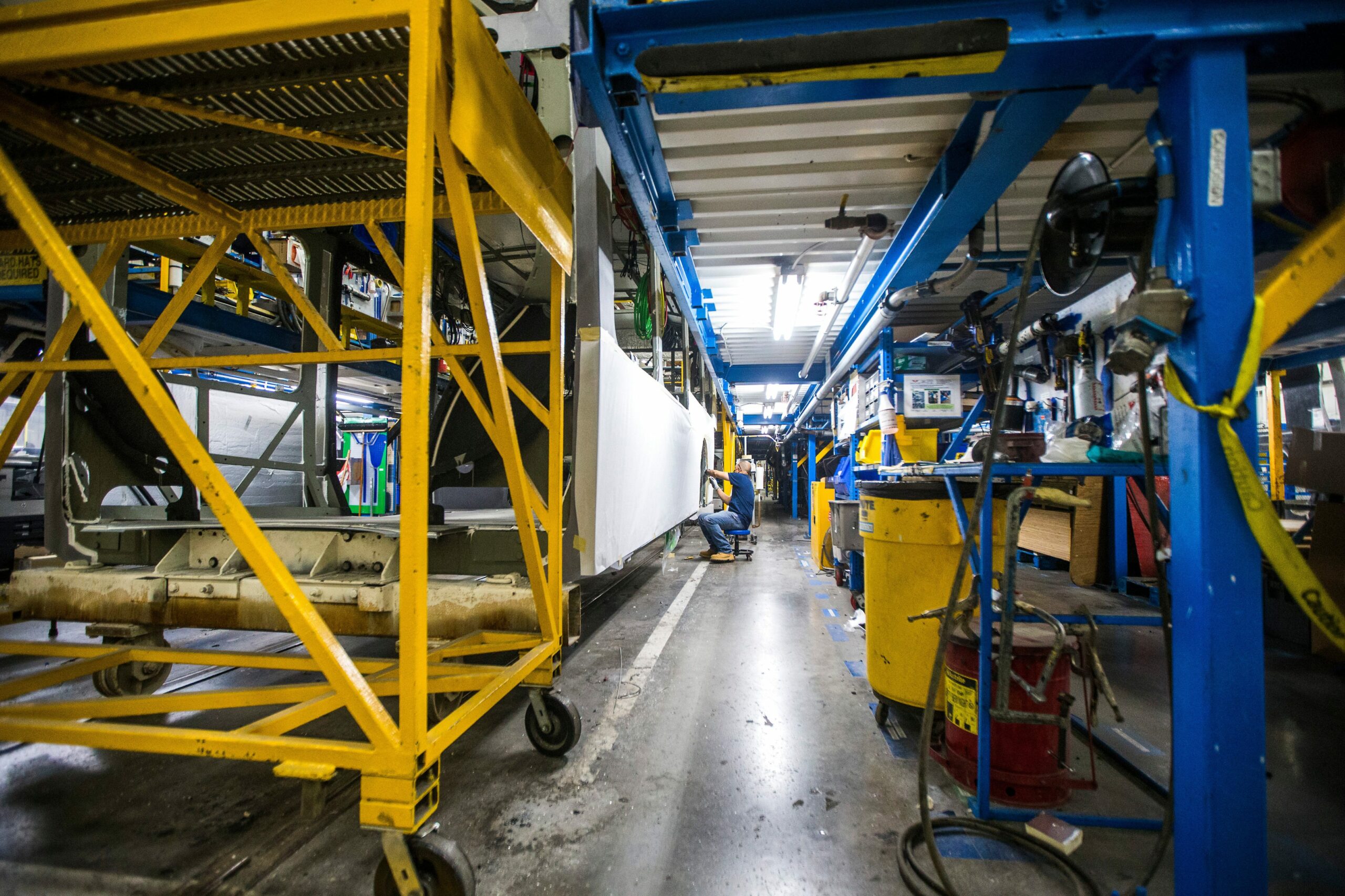
With Canada making major investments to speed up electric transit adoption from coast to coast, the opportunity for a made-in-Canada green transit industry looks bright. But the company is unsure Canada’s workforce will be able to keep up.
This uncertainty highlights how the Trudeau government has failed to introduce a plan to protect clean tech jobs for bus manufacturing in Canada, even as it seeks to tackle carbon pollution from the transportation industry — which is responsible for almost a quarter of the country’s annual greenhouse gas emissions.
Industry experts warn the federal government will need to focus efforts on developing strong policy incentives to build and retain a robust electric transit workforce — or risk shuttling its transit investments outside its borders.
Long before New Flyer began making a name for itself as the go-to shop for electric buses, a Winnipeg man named Jon Coval founded Western Auto and Truck Body Works Ltd. With a team of five staff, Coval built truck and bus shells in the early 1930s, selling their first full bus builds to Grey Goose Bus Lines in 1937. By the 1940s, Western Auto had designed the Western Flyer — a coach-style bus set to take over inter-city transportation in Western Canada. The Western Flyer quickly became the company’s star offering, prompting the company to change its name to Western Flyer Coach. The company hit bumpy financial roads through the 1950s and ’60s, prompting the provincial government to step in and take over operations under the name Flyer Industries Ltd. in 1971. During those early decades, the company tried its hand at transit buses and trolleys, slowly building a customer base across Canada and the United States.
“It’s a Manitoba success story,” Stephen King, New Flyer’s vice president of strategy and investor relations, tells The Narwhal and the Free Press in an interview. “Winnipeg is at the centre of the country and really closely located to the United States. Solid manufacturing history, rail-line access and all those types of things made it an attractive place to start the business.”
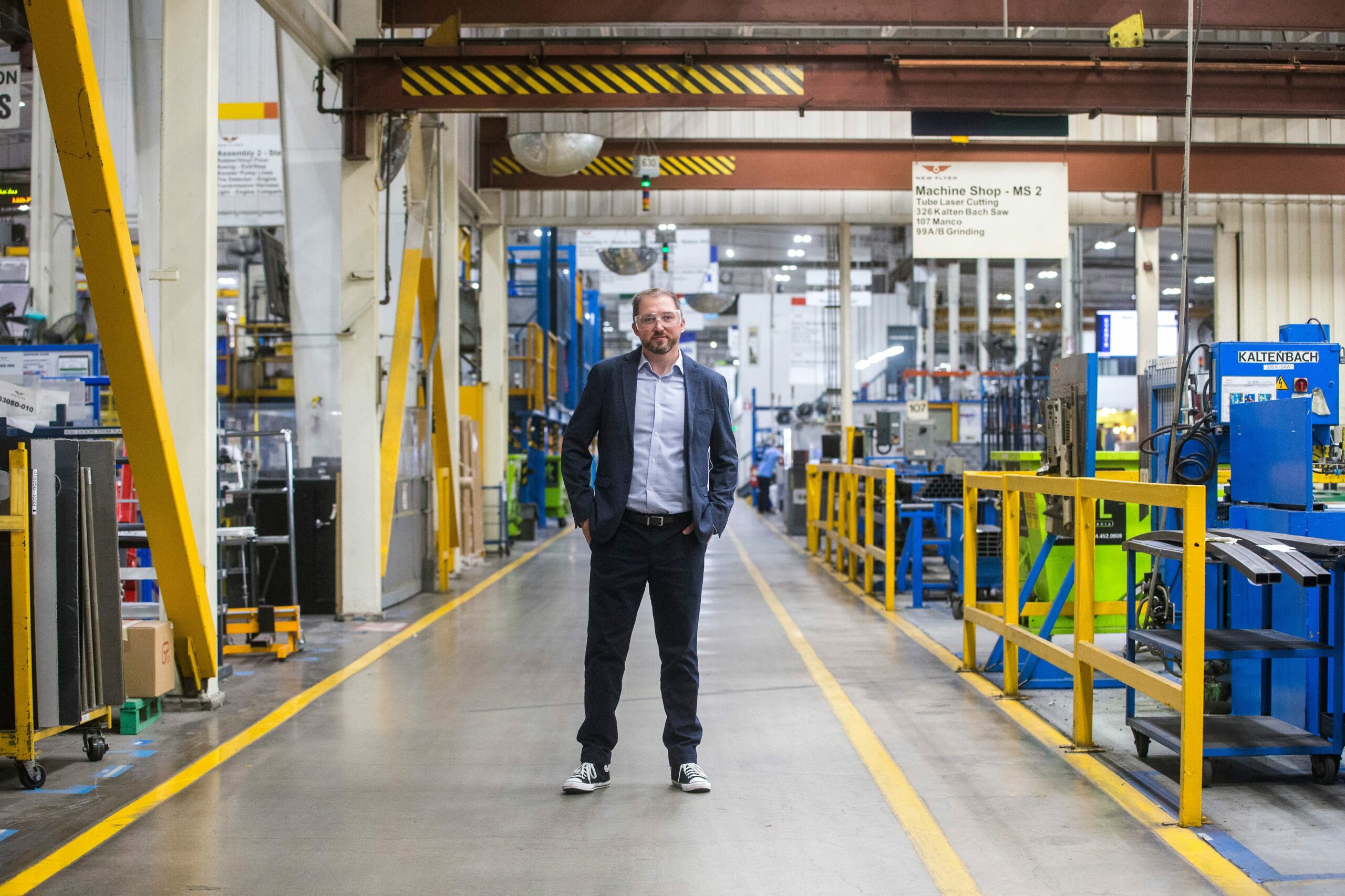
In 1986, the company’s vision changed. Jan Den Oudsten, a descendant of coachbuilders from the Netherlands, bought the company and ushered in an era of technological innovation. Under the name New Flyer, Den Oudsten’s vision saw the company develop a host of ‘firsts’ in North American public transit. There was the first low-floor bus, already a hit in Europe, which eliminated the need for stairs at the bus entrance, then the first low-floor articulated bus, which could seat extra passengers thanks to a flexible extender in the middle of the bus. In the 1990s, New Flyer took bus technology to new heights as it worked to develop the world’s first hydrogen fuel cell powered buses, and in 1998 the company delivered the first ever diesel-electric hybrid bus, making an indelible mark on the future of public transit.
“I think we saw the writing on the wall, that the future was going to be electric,” King says.
New Flyer Industries went public on the Toronto Stock Exchange as NFI Group in 2005, and in the years since has collected a host of accolades as a North American leader in zero-emission bus technology. They supplied the first fleet of hydrogen fuel cell electric buses to B.C. transit for the 2010 Vancouver Olympics; they unveiled the first all-electric bus prototype in 2012, with orders secured for Chicago’s transit fleet the same year; and announced both a zero-emission Xcelsior model and plans to develop the first North American-built 60-foot fuel cell bus in 2014. Along the way they’ve acquired a host of competitors and parts manufacturers, established international offices and developed a wing specifically aimed at helping cities plan the infrastructure needed to implement electric-transit technologies.
“I don’t know if I’d call us the ‘Tesla’ of buses,” King laughs, reflecting on the company’s history in the industry. “But our view is that we are the leader of electrification in the transit space.”
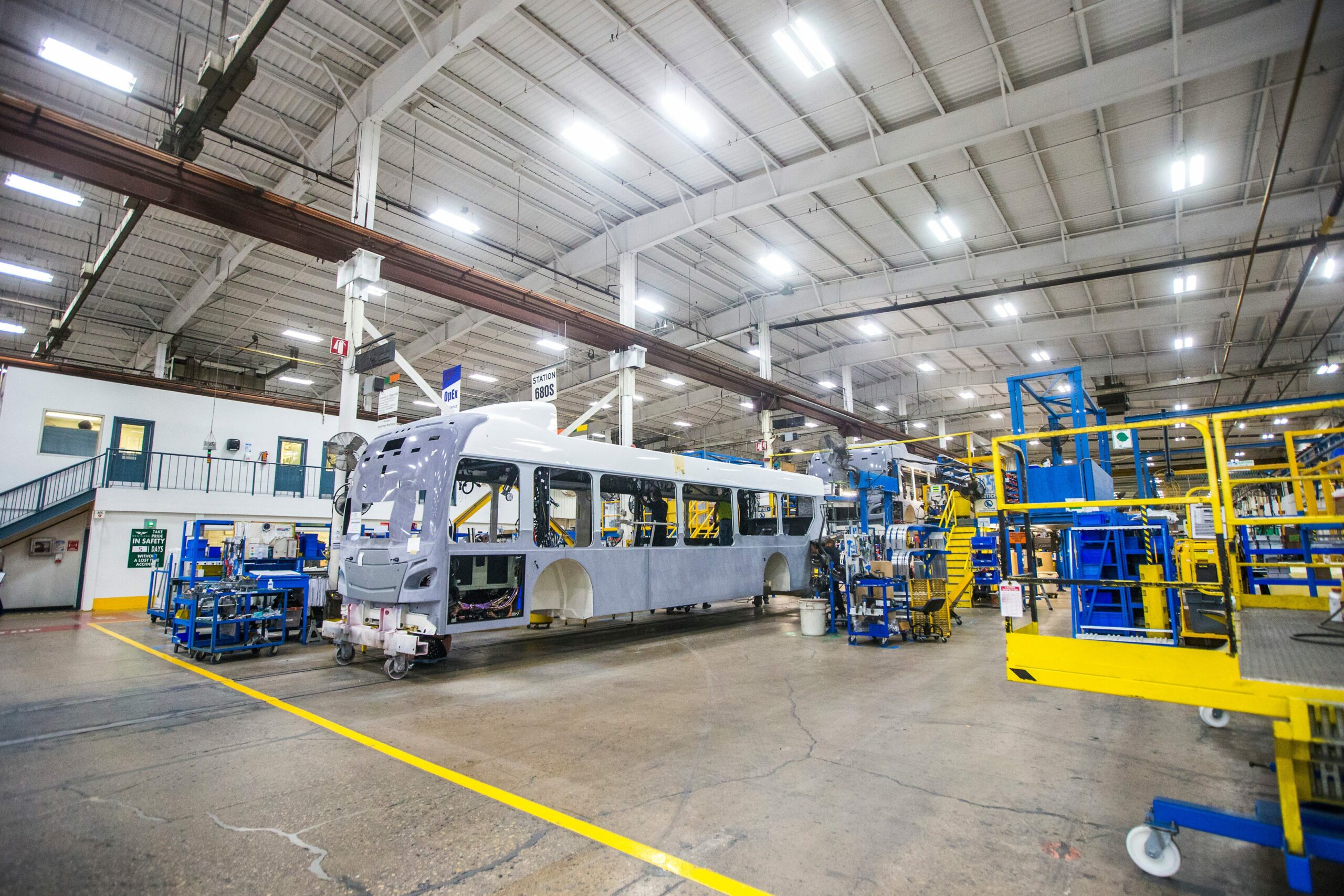
Today, New Flyer Industries offers what King estimates is the widest range of transit buses in North America. The company is “propulsion-agnostic,” he explains, selling everything from old-school diesel buses, to hybrids, to battery and hydrogen fuel cell-powered buses.
The “secret sauce,” King says, is that the company is able to customize each bus to its customers needs — from engine to paint colours — bringing a host of technologies together in one machine.
“We call ourselves ‘mobility solutions providers,’ ” King says. On top of bus manufacturing, the company makes several of its own parts, and offers maintenance, training and service for its buses.
“If you need anything bus-related, outside of operating the vehicles, we do everything else.”
The now-international NFI Group employs more than 7,500 people at dozens of facilities across the globe. About 2,500 staff members are employed at the company’s “flagship” facility — the global headquarters in Winnipeg. King says about half of those employees work in bus production and manufacturing, while the other half help steer the corporation.
Despite touting itself as a leader in Canada’s zero-emission bus market, New Flyer only gets a fraction of its business from Canadian transit agencies. About 90 percent of the company’s business is driven by customers in the United States.
Since 2020, the company has been reporting significant declines in revenue, deliveries and profits, owing largely to supply chain disruptions, the company says, and this quarter was no exception. Revenue reportedly dropped 32 per cent compared to 2021, bus deliveries were down 43 per cent and the company reported net losses of US$57 million — but the executive team said it remains optimistic.
Paul Soubry, president and CEO of NFI Group, told analysts on a quarterly results call in early August “there have been some positive signs that the worst is now over,” citing “record demand” and a backlog of bus orders that would help fill the company’s coffers in the coming quarters. Most of that demand, Soubry highlighted, is for zero-emission buses, which make up a growing percentage of current orders and backlog, as well as more than 50 per cent of the company’s potential bids for the next five years. In the second quarter, zero-emission buses made up 11 per cent of the more than 500 units the company delivered. Articulated buses — longer models connected by a central accordion piece — are counted as two units.
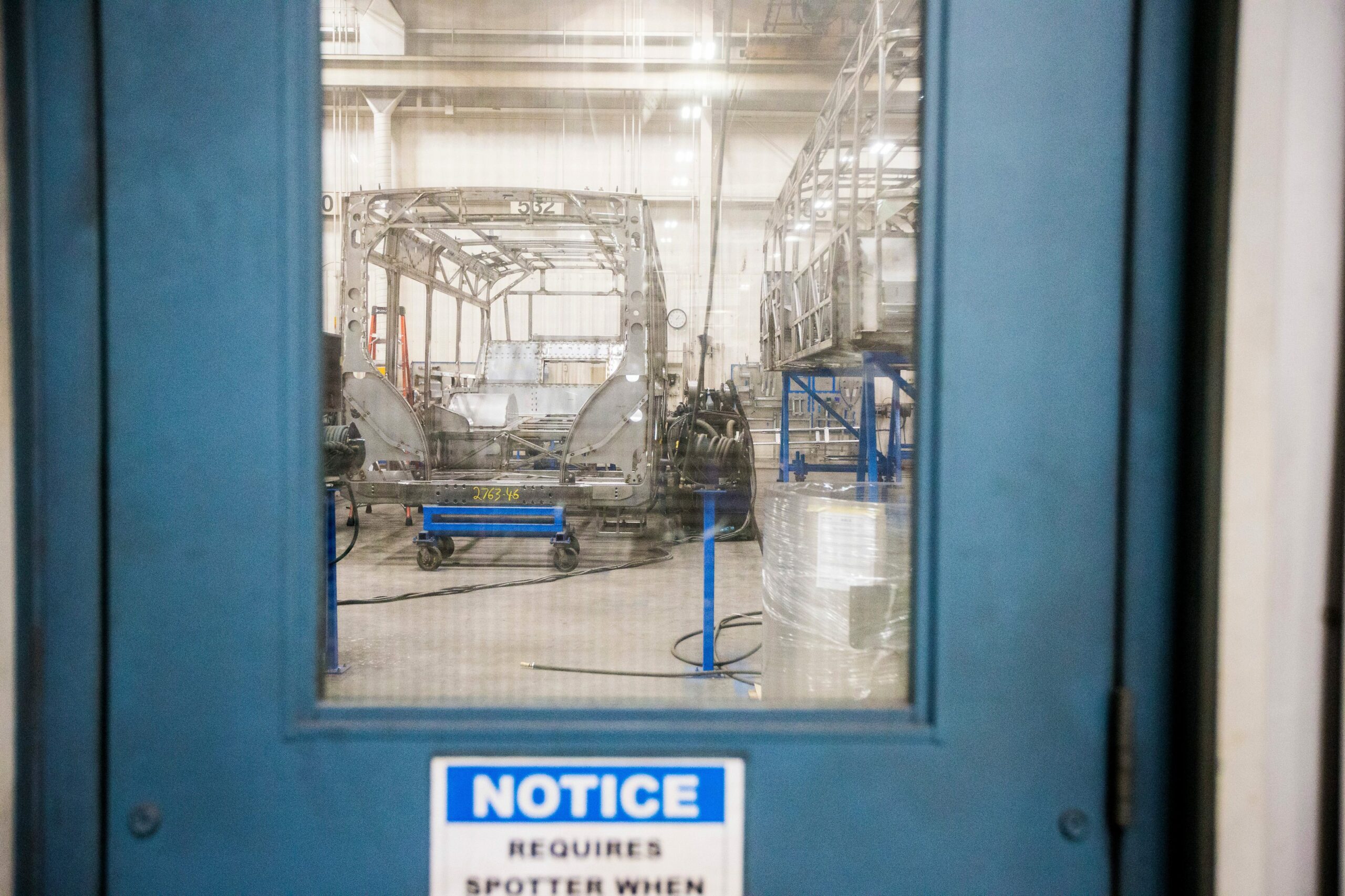
Some of New Flyer’s competitors also appear to be announcing a flurry of new deals.
In June, NOVA bus, a Quebec manufacturer owned by Volvo, announced separate deals to supply electric and clean diesel buses to transit agencies in Halifax and Huntsville, Alabama. Quebec-based Lion Electric, which has cornered the market for electric school buses in Canada, reported a 72 per cent uptick in bus deliveries compared to 2021 and a subsequent 76 per cent bump in revenue in its second quarter results.
In Canada and the United States, Soubry said the “primary driver” of bus orders is government funding. Though funding programs for transit buses vary widely from market to market, the United States leads with “well-established federal funding programs for transit fleet replacements,” according to NFI Group’s annual filings. In the U.S., federal funds typically cover about 80 per cent of the bus costs, while the remaining 20 per cent come from local funding.
Since 2016, New Flyer has benefited from a dedicated funding program for low or zero-emission transit in the United States. The Low-No grant program, as it’s called, offers competitive grants to transit agencies to support a transition to clean tech. In June 2020, New Flyer was named a “partner of choice” by 12 major U.S. transit agencies, giving them preference for projects awarded under the grant program. Nine transit agencies named New Flyer as a partner of choice again in 2021, and that year, the company received over US$40 million in Low-No grants. In 2022, the U.S. government made more than US$1.6 billion available to transit agencies through the Low-No program, and New Flyer expects to continue benefitting from the fund as projects are announced in the coming weeks.
NFI Group is quick to point out that zero-emission buses — which cost twice as much as diesel buses — bring in better profit margins for the company.
As a result, the company’s business has been focused south of the border. Of its 25 North American facilities, just a handful are sprinkled throughout Manitoba and Ontario. Outside of the Winnipeg headquarters, most manufacturing takes place at facilities in Minnesota and Alabama. Even the company’s “Vehicle Innovation Centre,” where customers can get a feel for the company’s offerings, is located at New Flyer’s Alabama plant.
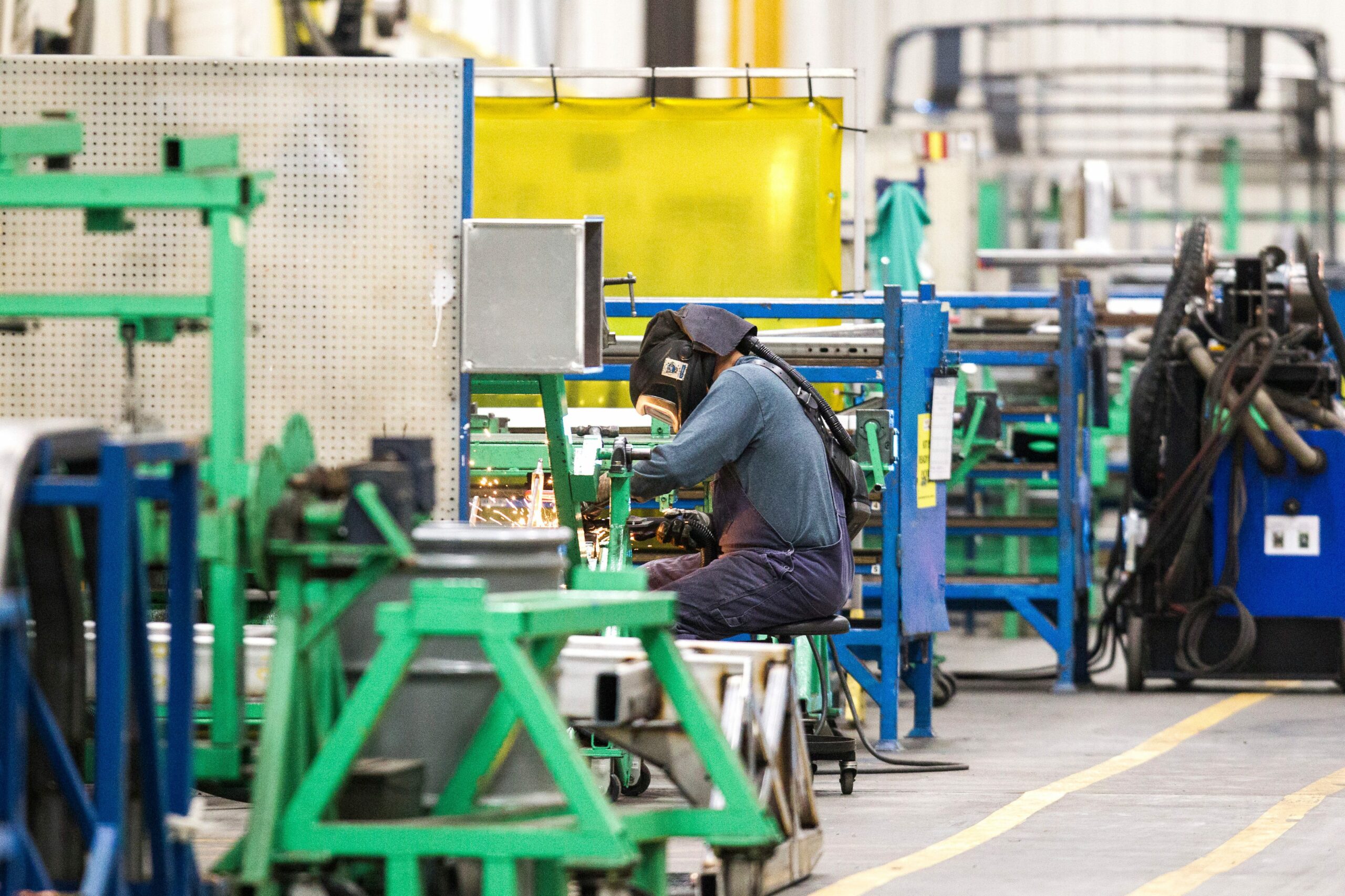
In Canada, by contrast, NFI Group notes there has historically not been a dedicated source of funding for transit buses. Instead, funding typically came from “a patchwork of provincial funding, municipal funding, fare box revenue, various federal programs, and other smaller sources,” meaning funding levels could vary widely from province to province, and even city to city. Until recently, zero-emission bus adoption in Canada has moved at a trickle, with cities hesitant to invest in big-ticket purchases without federal funds.
But there’s good news. In February 2021, the Canadian government announced a $14.9 billion-investment in public transit, with $2.75 billion set aside for zero-emission transit and school bus planning and procurement. That zero-emission transit fund, paired with a direct loan financing program through the Canadian Infrastructure Bank, has both New Flyer and industry experts feeling hopeful for Canada’s future.
“The Canadian market actually has quite an encouraging outlook over the next little while in terms of the fleet rejuvenation in Canada with a serious commitment by the federal government on helping the provinces in the cities to make that happen,” Soubry said during the quarterly results meeting.
King says the “really big steps” the Canadian government has taken over the last couple years are expected to drive “big orders and big demand” in the Canadian market — and that demand is already underway. In April, New Flyer inked a contract with the Toronto Transit Commission to provide more than 200 hybrid-electric buses in the next four years, with the option to produce another 360 buses in the years to come.
It’s NFI Group’s “first major win in that market in over a decade,” Brian Dewsnup, president of subsidiary NFI Parts said during the quarterly results call. And the company hopes that’s just the beginning.
The federal government has set an ambitious target of 5,000 zero-emission buses running on Canadian streets by 2026 as part of a plan to address greenhouse gas emissions in the transportation sector. Since the transportation sector produced 24 per cent of the country’s annual emissions in 2020, the federal government has noted zero-emission vehicles can help the country meet its international commitments under the 2015 Paris Climate Agreement, and reach net-zero emissions by 2050. But as of now, there are just 208 electric buses on the road, most of which hit the streets in the last 16 months, and are concentrated in larger urban centres like Toronto, Edmonton, Montreal and Vancouver, says Josipa Petrunic, president of the Canadian Urban Transit Research and Innovation Consortium (CUTRIC).
“My only job is really to get rid of cars by making transit faster, sexier, cooler, greener, cheaper,” Petrunic says in an interview.
Since 2015, the consortium has been operating as a technology innovation non-profit, offering demonstrations, market research and other project support for the transit industry across Canada. Over the last seven years, the consortium has spent significant time lobbying the federal government to financially support the research and development needed to bring electric buses online.
“There is no doubt that if we want to get to our climate action goals for Paris, we’re going to have to kill cars and really ramp up and put steroids into the transit industry,” Petrunic says.

So far, a handful of mid-to-large cities have pledged to bring electric vehicles into their fleet by 2026, but those promises only represent about 2,000 buses in total, Petrunic says. Since procuring an electric bus can take about three years from order to delivery, Petrunic estimates it will take until 2030 to meet the national target of 5,000 at the current pace.
There are two major hurdles between cities and electric transit fleets: infrastructure and cost. While a standard diesel bus can be bought for about $600,000, a battery-electric bus costs around $1.1 million, and hydrogen fuel cell bus can run upwards of $1.4 million — and that’s not counting the cost of charging infrastructure.
Transit agencies need one charger for every 12 buses and those chargers can easily cost $1 million each, Petrunic explains. For a fleet like Toronto’s, which boasts more than 2,000 buses, that means hundreds of chargers, and hundreds of millions of dollars on top of the price of the bus. Those chargers also need to be housed in new garages that can accommodate the buses’ new tech, adding significantly to the cost of adoption.

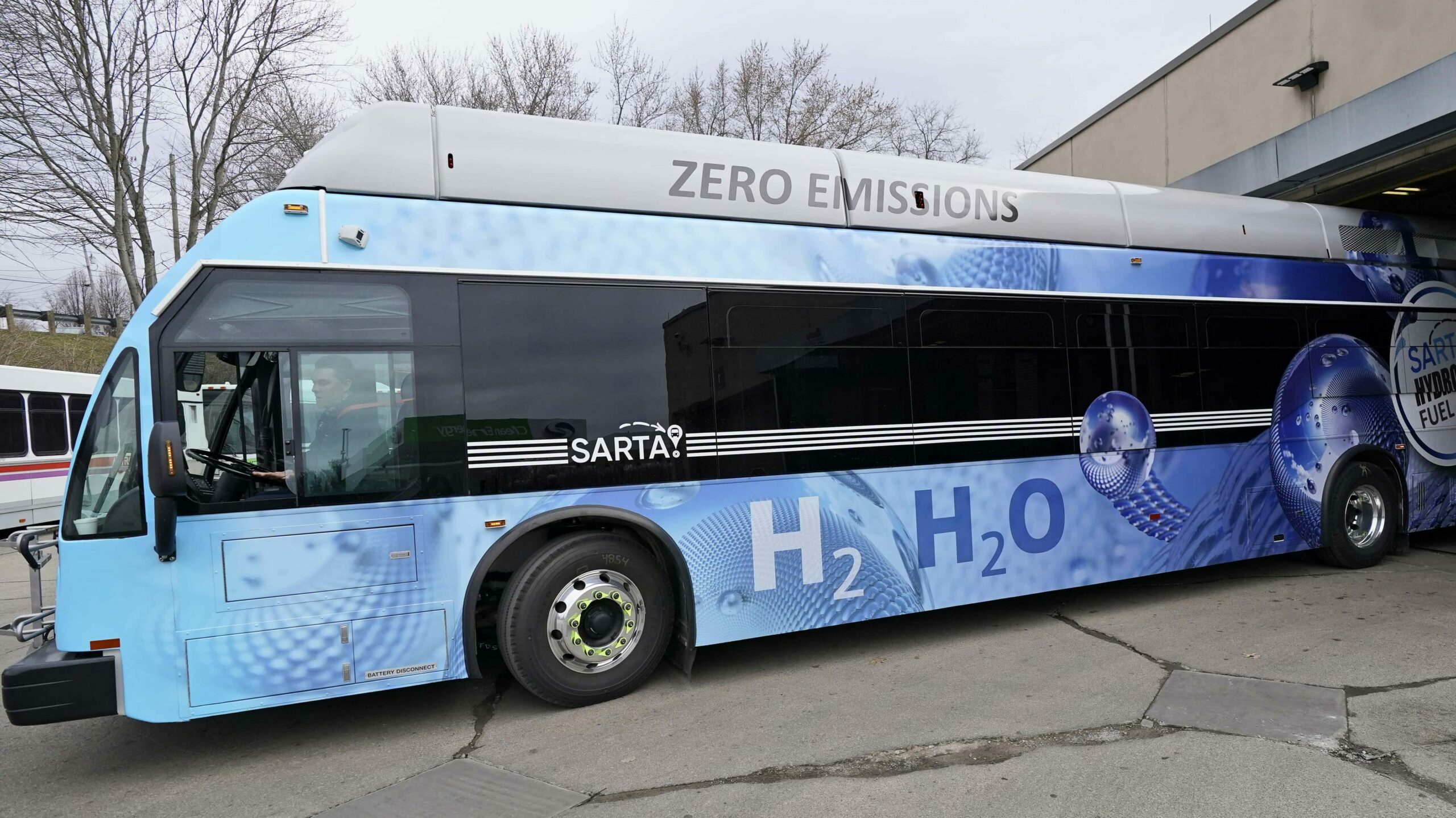
But Canada’s new funding package has eased some of the financial burden, prompting cities to beef up their fleet-replacement promises. Marco D’Angelo, president of the Canadian Urban Transit Association, says cities like Ottawa, Toronto, Vancouver, Edmonton and even Winnipeg have started to lead the charge toward fully-electric fleets.
Winnipeg has promised to have about 15 per cent of its fleet electric by 2027; Edmonton already operates 40 electric buses, with 20 more expected this year; Toronto, which already has dozens of electric buses on the road, plans to be fully electric by 2040; Ottawa has promised a zero-emission fleet by 2036; Vancouver, which already operates a robust trolley bus system, plans to be fully electric as soon as it can, D’Angelo explains.
The boon in demand for electric vehicles is good news for Canadian companies invested in zero-emission bus manufacturing. New Flyer and its competitors, including Volvo-owned Nova Bus and school bus maker Lion Electric, both headquartered in Quebec, have started to see an opportunity to ramp up production in the local market.
But there’s a hitch, one that could see Canadian taxpayers supporting green jobs south of the border instead of closer to home: the Buy America rules.
Once upon a time, buses built at the Winnipeg facility could drive right out of the plant — in fact NFI Group still makes a handful of coach-style buses entirely in Winnipeg — but the growing pressure of American content regulations have put a stop to the company’s all-Canadian transit manufacturing.
Since 1982, the United States has required publicly funded transportation infrastructure like highways, bridges and public transit must be made in America, with American materials. Over the years, details of this ‘Buy America’ legislation have changed, but the end result has handcuffed Canada’s transit manufacturing industry. Right now, Buy America rules for transit mandate that any project receiving more than $150,000 in federal funding must contain at least 70 per cent American-made parts (calculated by cost), and complete final assembly in the United States.
Those rules have had a major impact on New Flyer’s operations, says Clint Seys, president of Unifor local 3003, the union representing New Flyer’s Winnipeg employees.
Seys, who’s been at the plant for nearly 30 years, says his union once represented more than 1,600 Winnipeg employees, but the 2008 financial crisis set off a chain reaction that saw U.S. content rules get more stringent and the Winnipeg workforce whittle away.
“They just keep increasing the amount of the coach that has to be done in the U.S. for American jobs,” Seys explains. “It’s really just chipping away at the amount of work that’s being done here in Canada.”
In late 2018, for example, New Flyer announced it would be transferring about 90 jobs from its Winnipeg plant to a facility in Shepherdsville, Kentucky, in order to stay in line with U.S. content requirements — which jumped to the 70 per cent mark in 2019. Those job transfers, Seys says, cut an entire department manufacturing electrical components. The electrical component workstation was replaced with a socially distant cafeteria during the COVID-19 pandemic.
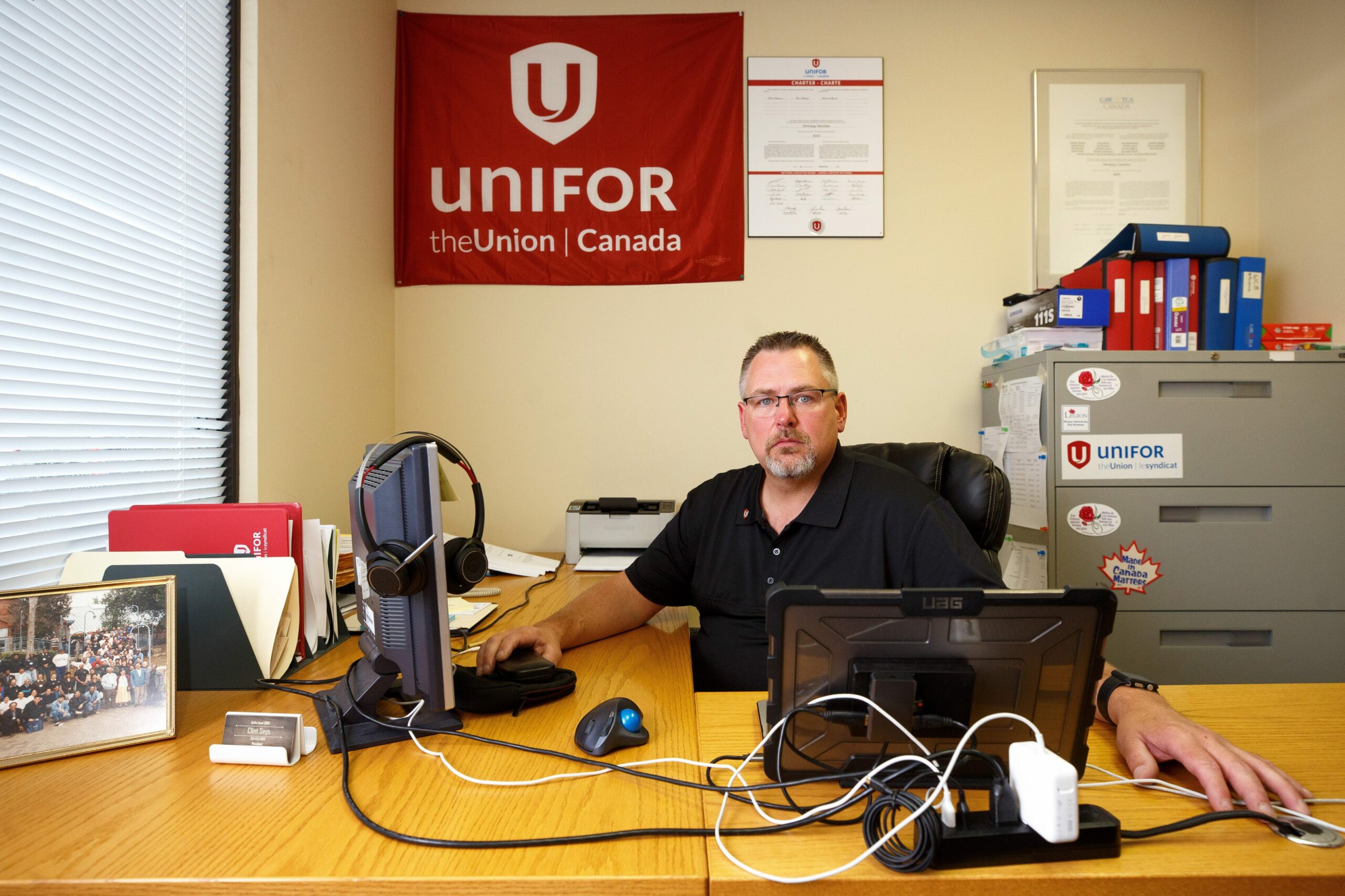
Seys now represents just 600 members in the Winnipeg plant, as well as a few hundred at an NFI Group-owned fiberglass manufacturer in the city. The Winnipeg plant has stopped completing full builds and now sends all its buses — even the ones slated for Canadian transit agencies — to the United States for completion. The content rules have had “grievous effects” on New Flyer’s jobs, he says.
“It’s a shame because if Canadian taxpayer dollars are being spent to buy buses and infrastructure here, they should have a positive impact on employment here,” says Seys. “We have good-paying jobs, hard-working people, we have the skills, we have the ability and we have the space to do it.”
Seys doesn’t blame the company for the losses — their hands are tied, he says — it’s the federal government that has dropped the ball for Canadian workers.
“It hurts me to a core because New Flyer has always touted the Winnipeg plant as the flagship in terms of quality, in terms of safety, in terms of productivity,” he says. “They wish they could bring more [jobs] back here. It’s the American laws that are causing this problem.”
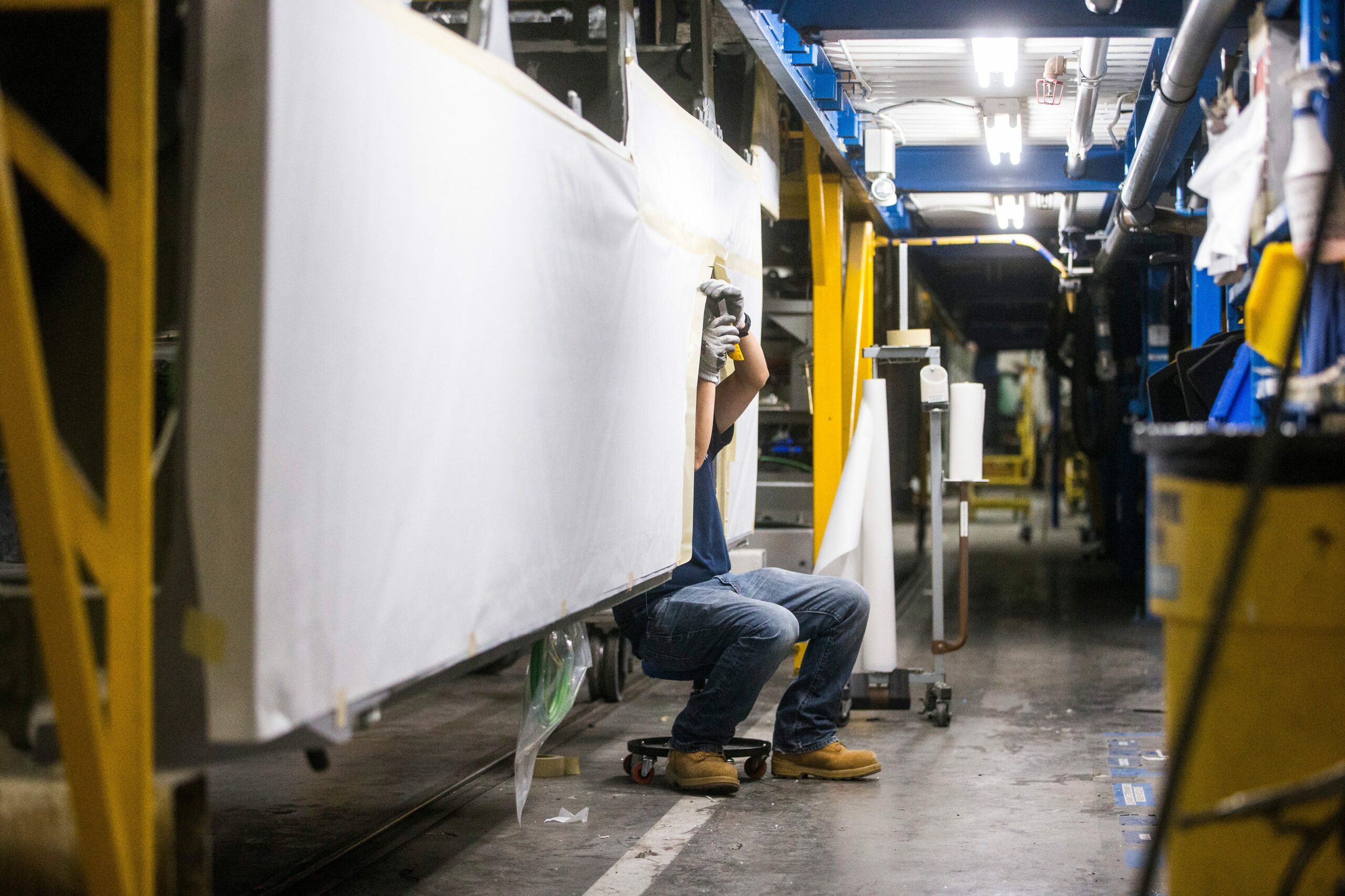
Seys has been working with Unifor members across the industry to reach out to “anyone that will listen” and lobby for “a firm commitment to bring jobs back to Canada.” The government, he says, has a responsibility to either enact content rules of its own, or pressure the U.S. to level the playing field.
“I want to see the transit industry taken care of,” Seys says. “I want to see rules around keeping job retention here and keeping offshore products out of here; I would also like to see them put pressure on the U.S. to maybe level this off and share in the sandbox, so to speak.”
So far, only the Ontario and Quebec provincial governments have tried their hand at local content rules. Any transit bus procured with public funds for an Ontario or Quebec city — including the hundreds of hybrid buses New Flyer has been contracted to build for the TTC — must contain at least 25 per cent Canadian content.
“I don’t think at our government levels federally or provincially, that we’ve pushed the Can-Con issue,” says Petrunic. “But in transit, we have a lot of jobs to lose if we don’t.”
In recent months, Canada has locked horns with the United States over content rules for electric passenger vehicles — and won. An early draft of America’s Inflation Reduction Act would have mandated any electric vehicles eligible for U.S. consumer tax credits be made with predominantly U.S. content, but Canadian Finance Minister Chrystia Freeland and trade minister Mary Ng fought back, arguing such rules would violate the Canada-U.S. Mexico Agreement (CUSMA), and ultimately decimate the auto manufacturing industry in Canada. After more than 1,000 interactions with American officials, the bill was amended to widen the eligibility to North American-made vehicles.
“Industrial policy in Canada has just missed looking at transit manufacturing as a sexy big job employer, but it is, and it needs to be respected as such.”
Josipa Petrunic, Canadian Urban Transit Research and Innovation Consortium
While Canada has celebrated the advocacy for auto-sector jobs, the transit industry has felt sorely left behind.
“It’s a big problem right now,” Petrunic says. “Nobody is advocating for the transit manufacturing sector to be included.”
The auto industry in Canada boasts between 400,000 and 500,000 manufacturing jobs, primarily in Ontario. But in 2020, Petrunic and the team at the consortium assessed the number of jobs produced by the transit manufacturing and electrification sector — from manufacturing to power generation — and found about 300,000 jobs in the industry, including 100,000 manufacturing jobs.
“Industrial policy in Canada has just missed looking at transit manufacturing as a sexy big job employer, but it is, and it needs to be respected as such,” Petrunic says. “Us not respecting it means that it’s stagnated and hasn’t grown to employ people at the level it could — these are good paying jobs, and they’re highly skilled jobs.”
Sitting outside at The Forks Market in Winnipeg earlier this week following a funding announcement to grow women entrepreneurship in Canada, trade minister Ng makes one point clear: “I do not like American protectionism.”
But countering with Canadian protectionism — in the form of stringent Canadian content regulations — isn’t as simple as it seems. Canada is bound by trade agreements with several major markets, and enforcing more aggressive content rules could put Canada in violation of those agreements. In other words, the same argument that won protection for Canadian players in the auto industry could also be used to argue against Canadian content rules.

In the latest federal budget, Ng and Freeland instead put forward the idea of consulting with Canadian industries about a reciprocal procurement program.
“Reciprocal procurement means that we will buy from you as much as you buy from us,” Ng says.
What exactly such a reciprocity agreement could look like is still to be determined. Ng says the government is in the process of speaking to business leaders about how such a program could work, but stressed such a deal could put Canada — which is the largest customer to industries in over 30 U.S. states — “in a good position.”
Back at New Flyer, King says Canadian content rules like Ontario’s wouldn’t get in the way of the company’s workflow. In fact, he says, more Canadian content rules could help stimulate work on this side of the border.
“To drive more Canadian activity, there’s always content rules, which will just naturally drive some of those decisions because manufacturers and transit agencies will have to ensure that procurements meet those rules,” King says.
During the quarterly results call, CEO Paul Soubry even teased the possibility of all-Canadian builds in the coming years.
“Without letting too many cats out of the bag,” Soubry said. “(The company) is looking at scenarios of all-Canadian builds going forward — and those kinds of things to allow us to satisfy what we think to be a pretty encouraging Canadian market.”

But before New Flyer can take on the workload of all-Canadian bus manufacturing, King says the country needs to bolster its workforce. Most transit agencies have been working on diesel and natural gas buses for decades, he explains, so shifting those jobs to the clean energy sector, with all new infrastructure and parts, can be complicated. The solution, he says, is a dedicated federal investment in workforce development.
“Anything around that focus on workforce development — investing in people, investing in training — is really going to go a long way,” King says.
But creating more job availability on this side of the border goes beyond university training programs. Petrunic suggests incentive programs, such as grants or scholarships tied to staying in Canada to work, could help with talent retention, as could dedicated advertising and marketing for the sector’s clean energy jobs. King adds that grants for companies looking to offer on-the-job reskilling programs could also support job security in a changing economy.
Speaking for the Unifor members, Seys adds the workplace is a great place for trade workers to learn new, transferable skills, but that kind of training requires an influx of cash.
“They’re always trying to get more people into the trades. Well put your money where your mouth is,” he says. “We need to have funding and education and places to go.”
So far, the federal government has made no promises around workforce development. Ng says she recognizes there’s “more work to do” in levelling the playing field between Canada and the United States, but stopped short of hinting at any specific federal efforts aimed at strengthening the transit sector.
Asked about the job losses at New Flyer thanks to American content rules, Ng only offered general comments, saying the government “will keep working with Canadian industries … in particular those that are building a green economy” in order to “support their growth.”
Ng pointed to the federal government’s recent investments in transit infrastructure — including the zero-emission transit fund — as evidence of a new federal commitment to meeting climate goals and creating liveable cities, while noting the government plans to work with provinces and the private sector to “make sure that the skills of the future … encourages and enables more workers in what is going to be the green economy.”
But on the floor in Winnipeg’s bus plant, New Flyer is taking things one step at a time. The company is still struggling to work its way through the supply chain disruptions that have marked the last two years, but there’s light at the end of the tunnel.
Get the inside scoop on The Narwhal’s environment and climate reporting by signing up for our free newsletter. On a warm September evening nearly 15...
Continue reading
Governments of the two provinces have eerily similar plans to give themselves new powers to...

Katzie First Nation wants BC Hydro to let more water into the Fraser region's Alouette...

Premier David Eby says new legislation won’t degrade environmental protections or Indigenous Rights. Critics warn...
